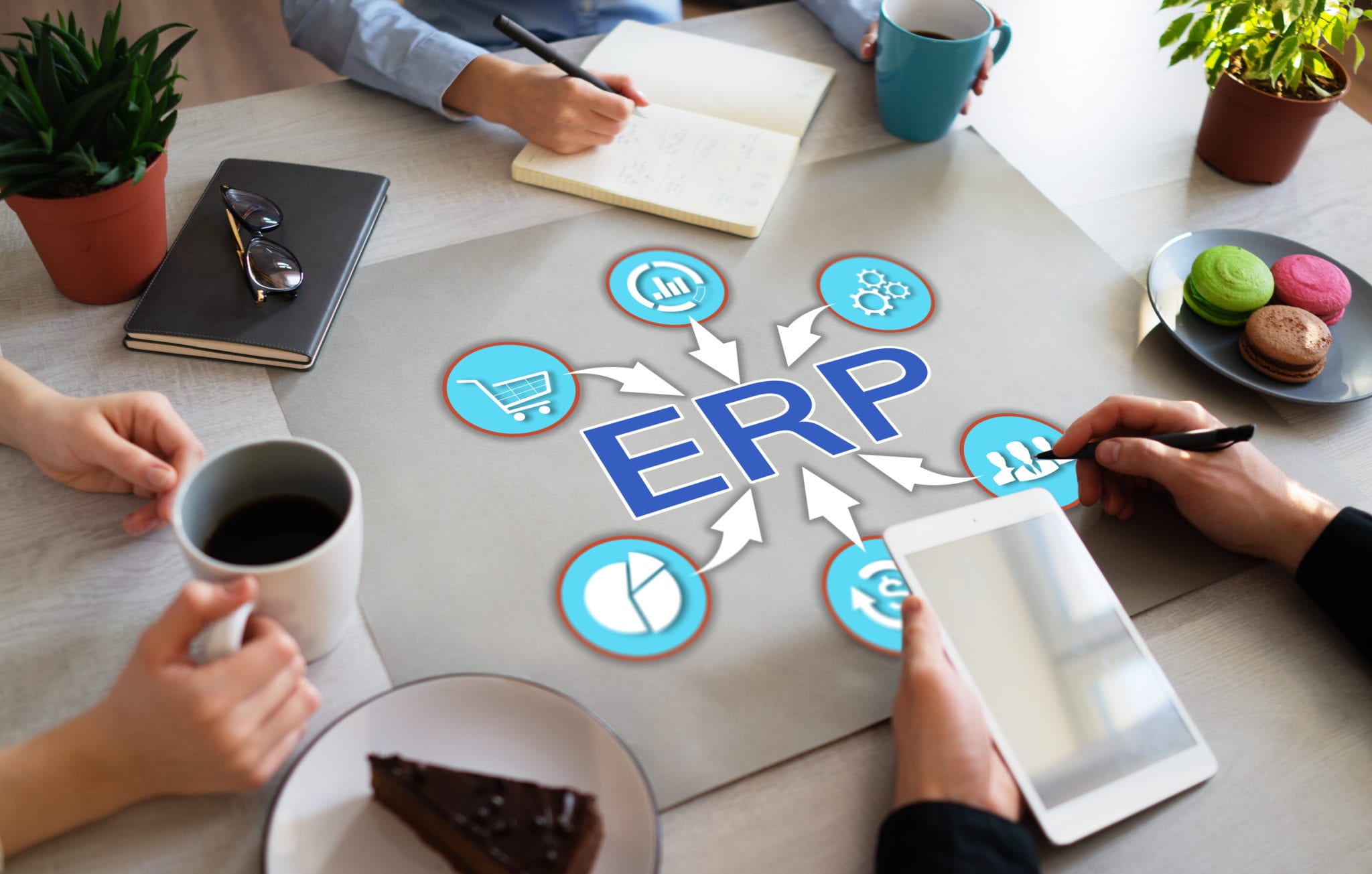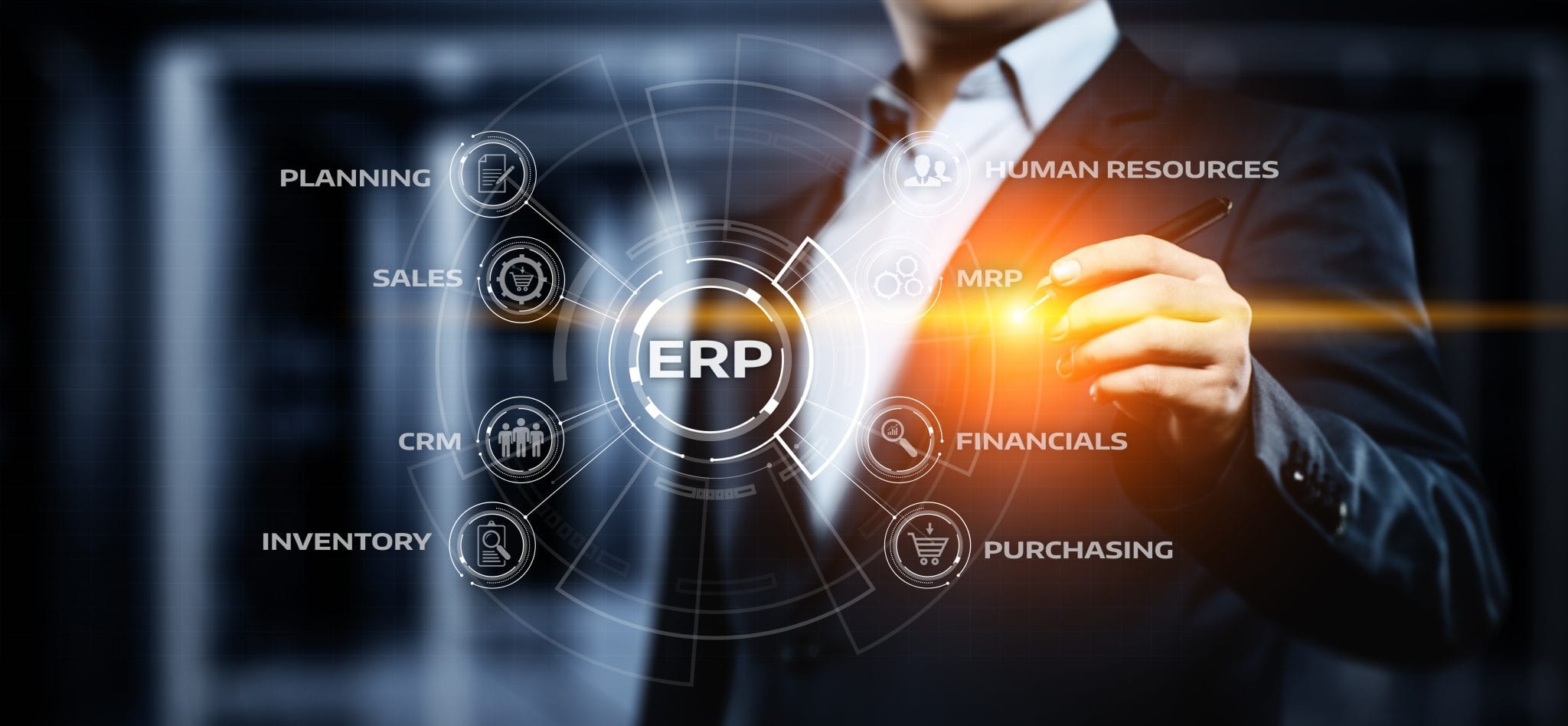What are the Most Effective ERP Integrations Methods?
Businesses that accumulate and handle large amounts of complex data need to have an internal management system in place that’s sophisticated, reliable, secure, and capable of supporting integration of databases. Business management software solutions have advanced greatly to meet these needs in the form of Enterprise Resource Planning (ERP), which is a suite of integrated applications and tools designed to facilitate the management of various end-to-end business processes. Businesses in all different industries and sectors use this technology to more effectively monitor and track their internal operations using real time data for optimized accuracy and efficiency. This kind of software has become integral to how companies function on all organizational levels and requires strategic implementation. A unified view of all essential data is one of the primary missions that’s achieved with successful integration.

Benefits of ERP Software
The technology that supports these integrated tools and applications provides a myriad of benefits to businesses of all sizes:
- Improves accessibility, reliability, and accuracy of data
- Reduces human error and labor-intensive workloads
- Facilitates and accelerates data exchange and sharing ability
- Increases accuracy of decision making with sharper insights and multidimensional visibility from different angles
- Streamlines workflow across departments
- Decreases workforce burdens such as manual data entry
- Improves team collaboration and communication with task tracking capabilities, organizational strategies, and data sharing tools
- Reveals internal strengths and weakness of an organization
Types of Third-Party Software That Benefit From ERP Integrations
- Business Intelligence: Sharpened internal data analytics and business insights
- Human Resources: Improved tracking methods and automation of backend tasks and workflows involving human capital
- Project Management: Aggregation and visibility of all workflows across teams and departments; improved time efficiency and task tracking
- Supply Chain Management: Streamlined inventory tracking, consolidated holistic visibility, real-time reporting metrics, improved vendor performance, increased flexibility and agility, cost reduction and fraud prevention, more control and efficiency in materials requirements planning
- E-commerce: Heightened efficiency with automated data transfers related to customer information, orders, inventory, and shipping data
- Customer Relationship Management: Collaboration, customer engagement and fulfillment, optimized performance and sales funnel conversion, unified and synchronized customer information and data storage.
Each of those falls into one of two ERP strategies:
- Administrative strategy: Financial and human capital management
- Operational strategy: Manufacturing, order management, supply chain
Addressing Integration Pain Points

Common struggles with integration often have to do with existing internal systems and enterprise applications that store valuable data but can’t support scalability and increasing demands. Businesses outgrow their outdated process management systems and need a more supportive system in place, but there can be issues with transitioning over to automated software and higher-level technology.
Integration Challenges
Adoption, implementation and adaptation of ERP software can be challenging and complex; encountering and overcoming pitfalls, roadblocks, and bottlenecks are sometimes an unavoidable part of the process.
- Deciding on the right integration strategy: Select software based on unique definition of ERP solutions. Consider all needs for each department involved, and don’t neglect IT support and communication.
- Implementing and maintaining integration: Some methods of integration require constant system updates and upgrades to sustain processes, which can increase expenses with time as new elements and tools are added.
- Standardizing data: Full integration requires unification of all data types.
- Customizing tools and applications: Widespread customization is often a necessity when implementing and troubleshooting ERP solutions, as technical issues arise and are addressed. This is part of a trial and error process that requires tailored solutions.
- Cloud-based deployment of integration: Consider cloud services and whether these would be beneficial or essential to the integration deployment process.
- Employee training on new software: Because of the complex nature of integration, there can be a learning curve involved that requires getting all departments on board and on equal footing as they adapt to new software and business practices.
To make this transition smoother, integration methods have become more advanced and specific to enable full implementation of ERP software for improved workflow based on an organization’s needs and range of core processes. The best approach to ERP integration depends on the type and size of the business, its budget for new software, and if it’s currently using on-premises or cloud-based software, or a hybrid type. This also determines how the implementation process will move forward.
Approaches to Integration
On-Premise ERP
This software is installed within a company’s technological ecosystem, instead of being hosted in the cloud. Companies that collect and maintain highly sensitive data are better suited for this kind since cloud migration can pose security risks. With internally managed data centers and firewalls, information can be more securely controlled and protected.
Cloud-Based ERP
This is hosted by a third-party cloud-based platform, which enables mobile accessibility and offers more cost-efficient benefits and continual updates that keep the software stable and high-functioning. The adoption of cloud-based services and software are often driven by acquisitions and mergers, which entail high volumes of data migration and exchange across organizations. It’s ideal for sustaining accelerated growth strategies that call for rapid improvement in product quality and data access. Global digital transformation is highly dependent on advanced cloud ERP solutions.
Postmodern ERP
A hybrid version that combines the best of two worlds, postmodern ERP is considered the most cutting-edge type of the three options. It combines administrative and operational strategies by automating and linking both categories of business capabilities. It entails an advanced level of continuous integration that balances flexibility and agility for optimized process management and control advantages.
Some Other Trending Approaches to Consider:
- Mobile ERP: Real-time remote access to data generated by dashboards, reporting tools and metrics monitors.
- Social ERP: Integration of social media into ERP systems as an added feature and enhanced functionality that involves remote access to social media data.
Top Methods of Integration
Methods are chosen and ranked based on key factors that include compatibility, adaptability, flexibility, and usability. These get broken down even further based on organizational needs and pre-existing systems. Some methods are more centralized and all-encompassing than others; it depends on the process of continuous integration and how a company chooses to approach the transition around software development.
Point-to-Point
Software is individually connected to existing tools and applications. With this approach, companies benefit from low-barrier to entry and can adjust it separately for each system. Tools can gradually be added as the need arises. A more specific example of this is tightly coupled system integration, in which individual integration points are developed and communicate through system of data requests and responses.
Custom Applications
This is more of an adaptation method in which companies can customize applications to be compatible with some of their existing software. In this case, data transfers are a crucial step in the implementation process and can be difficult depending on the data types. Some companies start with this before gradually adding more tools and capabilities as needed. This is based on service-oriented architecture that enables loose coupling and flexibility, which means that systems are separated by function and aren’t impacted by changes in other systems.
Enterprise Service Bus
Also known by the acronym ESB, this is a very advanced integration method that entails unification applications by a centralized tool, enabling communication and standardization across all systems and databases. This simplifies the integration process and eliminates the need to customize or update tools and applications so that they’re all compatible and connected on all stages of growth.
Keys to Smooth and Successful Integration
- Deployment of integration in carefully planned phases and incremental stages can smooth the transition process and data. It allows time for adaptation, and to fine-tune applications and tools prior to full system launch.
- Preparation for data migration and routing is critical to prevent loss of data and oversights. Creating data maps and interfaces in the early phases of integration prepares the system for new standards of data management. This will involve a complex process of data cleansing and normalizing, validating for accuracy, and assigning ownership to establish accessibility.
- IT security practices for safety and protection should be prioritized throughout the integration process. Identity management software is a good extra measure of protection and security defense for data that can be vulnerable to exposure and risk during transferal and migration across systems.
Conclusion
With all the versatile and transformative benefits that ERP Integration provides, it’s important to account for what processes are specifically used and essential to a business, as well as its own unique approach to IT. ERP is more than a single transitional process, it’s a long-term strategy. When it comes to choosing the optimal approach for ERP integration and implementation, the core internal processes that drive a business are priority considerations. Understanding the systems that are already in place, what they do and how they can be improved is key to drilling down to the method that will be most conducive for increased productivity and successful outcomes for an expanding business. ERP integration solutions can be costly in the short-term but highly advantageous in the long-run, provided that they’re in close alignment with the organization’s industry-specific structure and strategic goals.
We hope you enjoyed this post in collaboration with Tipalti.









